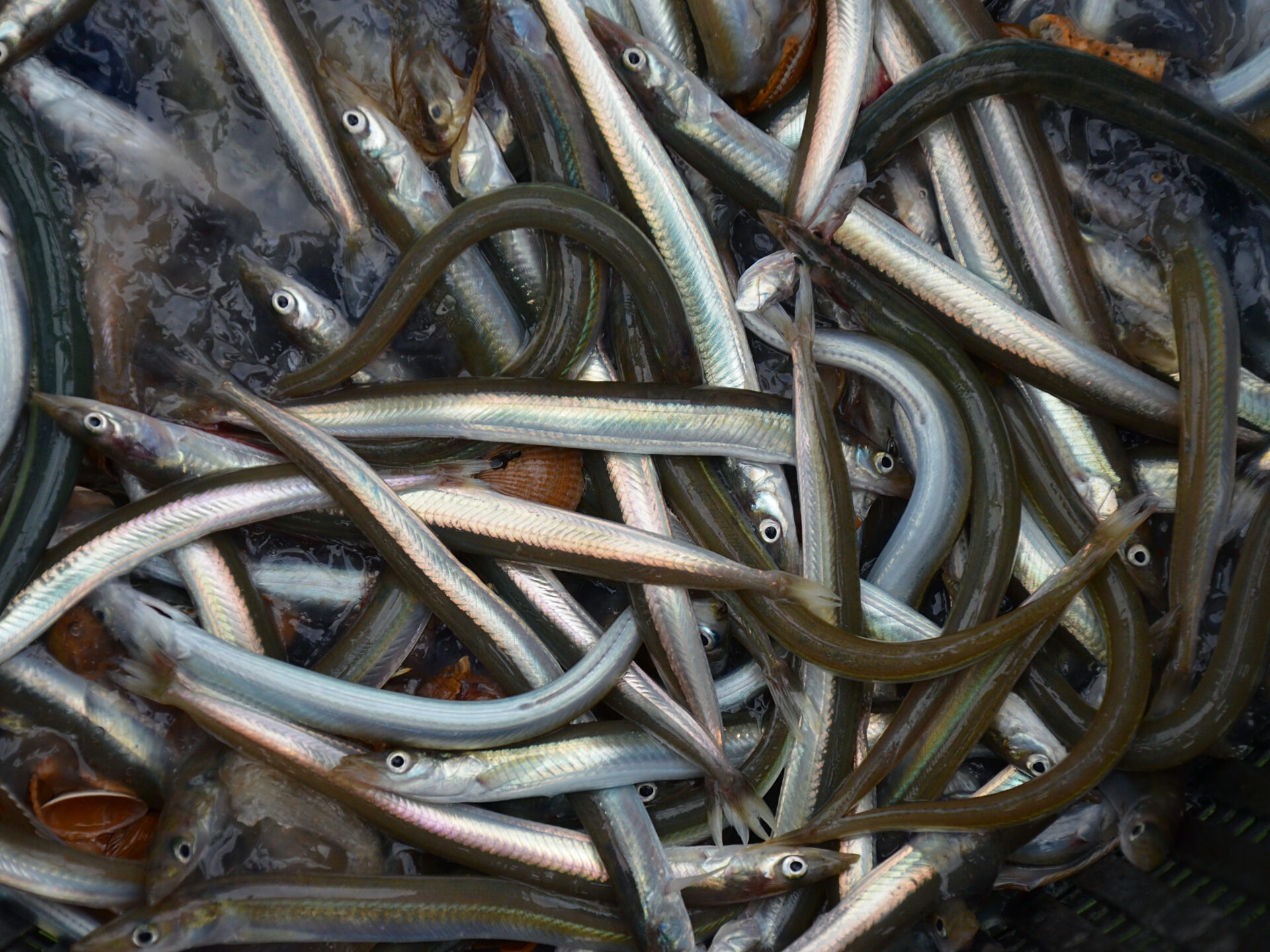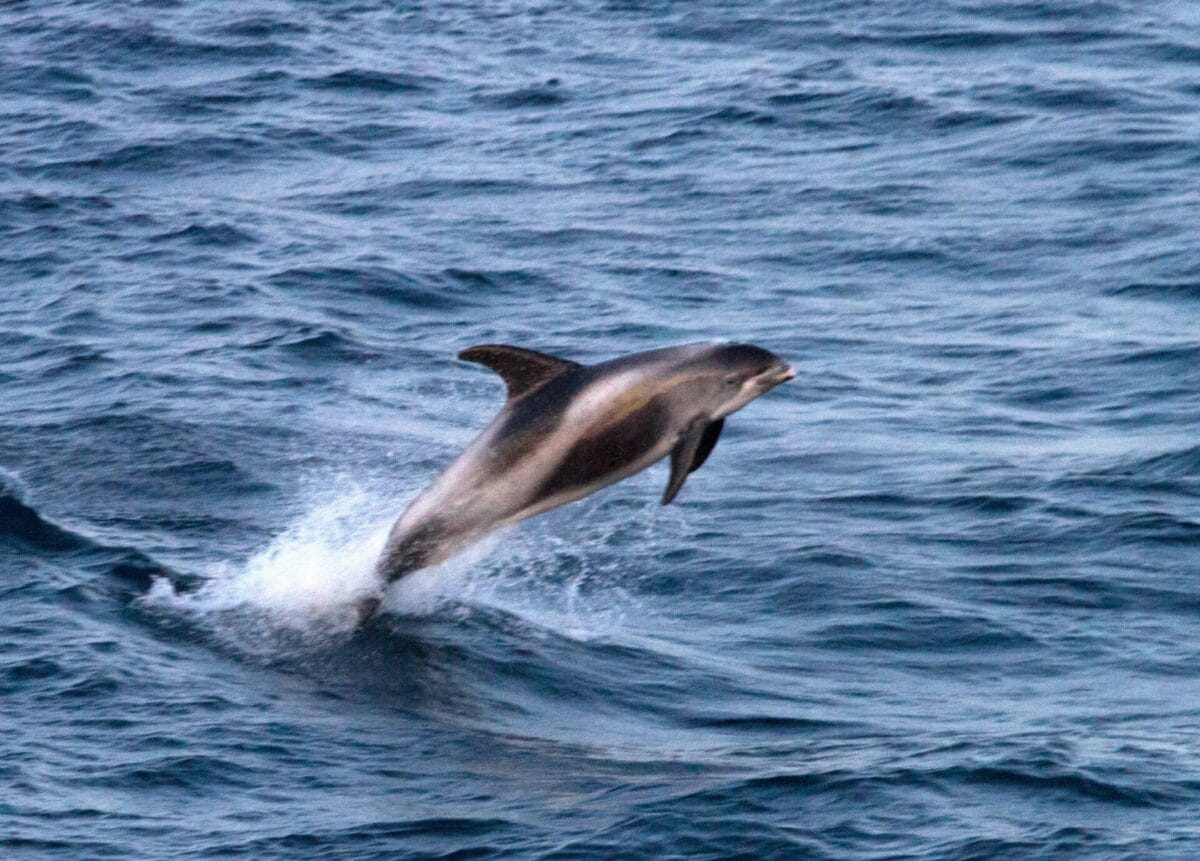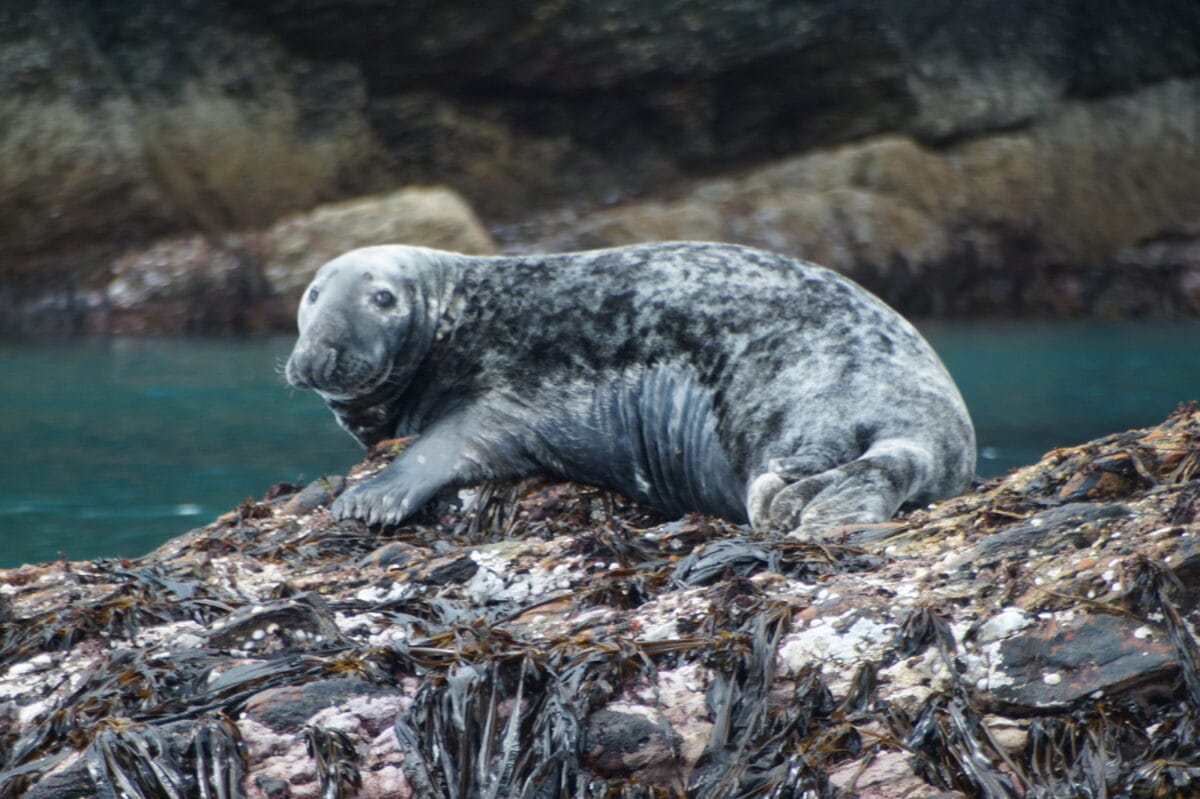Dozens of Scotland’s marine and coastal species are critically endangered or in rapid decline due to industrial fishing, climate change, pollution and other pressures, The Ferret has found.
The species most at risk include fish, birds and mammals, such as cod, salmon, trout, harbour seal, gulls, shag and guillemot.
Declining fish numbers in Scottish waters – caused by overfishing and climate change – are impacting birds, dolphins, whales and others who rely on fish as a key food source, while pollution, energy infrastructure, and fishing gear also threaten marine life.

Scotland’s coasts and seas support an estimated 8,000 plant and animal species, according to wildlife agency NatureScot.
As part of our Scotland’s Seas in Danger series, The Ferret looked at the most recent data and information from Scottish Government agencies, conservation bodies and others to explore which species are most at risk.
NatureScot said the state of Scottish marine life was “mixed” with different pressures faced by different species, including climate change, invasive species and “human activities”.
Wildlife charities warned of “ever-expanding human industrial use” of Scotland’s seas, citing fishing and offshore renewables as key pressures. But adapting to climate change, and protecting species which are key food sources for marine life could help to turn the tides, they said.
Fish
The 2023 annual report for Scotland from the State of Nature Partnership, which includes experts from more than 50 organisations, is “the most precise review of how nature in Scotland is faring”, according to NatureScot.
It says Scotland’s fish stocks and marine life biodiversity has “declined steeply” since 1924 due to fishing pressures. Despite an increase in fishing and sustainably harvested fish and shellfish stocks, fewer fish are being landed.

Cod stocks have already reached critical levels. To stem the decline, the International Council for the Exploration of the Seas recommended a total ban on fishing west of Scotland cod, Celtic Sea cod and Irish Sea whiting, and a two-thirds reduction of North Sea cod.
Sandeel and plankton are particularly crucial, acting as a key food source for fish, seabirds and mammals. Sandeels have faced decline due to industrial fishing and climate change. Ministers announced a ban on sandeel fishing in Scottish waters on 31 January.

Marine Scotland has warned that changes to plankton – microscopic plants and animals which convert carbon dioxide into oxygen – will impact fisheries and a wide range of marine life.
Climate change is also altering the behaviour of some species, which could impact the food chain. For example, fish larvae may not hatch at the same time as their zooplankton prey, and be unable to survive.
Ocean acidification – caused by carbon dioxide – may reduce the amount of calcium carbonate crucial to species that form shells, and could lower the survival rate of other fish. Rising temperatures off the west coast are projected to cause declines in species such as cod, herring and haddock.
In 2021, Marine Scotland found record low numbers of Atlantic salmon and sea trout, although numbers rose by 16 and 11 per cent respectively the following year. Atlantic salmon were declared endangered for the first time by the International Union for Conservation of Nature in December.

Birds
Many species of sea and coastal birds are suffering decline, with 50 species found in Scotland listed as threatened by the British Ornithology Trust.
State of Nature found seabirds were faring worse in Scotland than the rest of the UK, with the average abundance of 11 species having halved since 1986. These results pre-date the recent bird flu outbreak.
RSPB said gannet and great skua are likely to have been among the hardest hit, of which around 50 and 60 per cent of the global population live in Scotland respectively. Declining gull numbers have closely matched the amounts of fish landed, which leads to food shortages, the report says.


Birds have also been impacted by non-native predators such as American mink, which preys on young seabirds at colonies on the west coast and the Western Isles.
The 2022 Wetland Bird Survey of birds which spend winters in Scotland, found that water and wader bird numbers – including oystercatchers, lapwings, plovers and curlew – decreased by 10 and 55 per cent respectively since 1975.


NatureScot data, shared with The Ferret from a programme which details the state of “special interest” species, also found bird species to be at risk.
Some 42 per cent of seabird and coastal bird populations were in an “unfavourable” condition in 2023. But the picture was more stark for birds that breed in Scotland, with more than half deemed unfavourable.
All populations of arctic skua, great crested grebe, roseate tern and black-headed gull were in an “unfavourable” condition, as were most populations of shag, black guillemot, long-tailed duck, and numerous gull, tern and plover species.



A seabird census from the Joint Nature Conservation Committee showed that between 2015 and 2021, the Atlantic puffin population in Britain and Ireland – three-quarters of which are in Scotland – fell by 21 per cent. The bird is vulnerable to extinction.

Extreme weather such as storms can make it harder for seabirds to breed or hunt, according to Marine Scotland, putting those which tend to produce small numbers of young, at risk.
Rising sea levels could impact nesting habitats for leach’s storm petrel, arctic skua and others, which could become regionally extinct. All wild birds in Scotland are protected, although some species receive higher levels of protection.

In September, we revealed that tens of thousands of marine and coastal birds, including those with struggling populations, such as the red-breasted merganser and several gull species. were licensed to be killed by NatureScot in recent years. This led the first minister to promise an investigation.
NatureScot said culling was a “last resort”, mostly to protect food supplies, or to avoid aircraft collisions, and did not affect the birds’ conservation statuses. Cull numbers were falling due to changes to the licensing system, it added.
Mammals
Marine Scotland says mammals play a critical role in balancing the food chain by controlling the populations of their prey species. However, the effects of climate change and other man-made activities put them at risk. Mammals in Scottish waters include dolphins, harbour porpoises, whales, and seals.

As mammals move into areas where prey is more available, their disappearance can indicate the effects of climate change and declining numbers of fish species they prey upon, particularly sandeels.
Falling sandeel numbers have already been linked to shrinking seal populations in the northern isles and east coast while rising sea water temperatures are reducing the white-beaked dolphin’s range, and pushing them further north, away from Scotland.

Other threats include pollution, energy infrastructure, storms, entanglement in fishing gear, disturbance and collisions with fishing vessels, and warming seas, which leave them more exposed to disease.
Noise pollution from marine traffic, oil and gas exploration and acoustic deterrent devices – used to keep animals away from fishing gear and salmon farms – can also pose a threat. Seals were previously shot by fish farming companies until the Scottish Government banned the practice in 2021.

NatureScot data shows harbour seals to be most at risk of decline, with 85 per cent of populations in an “unfavourable” condition. However, grey seal, bottlenose dolphin and harbour porpoise populations were all in a favourable condition.
‘Mixed picture’ for Scottish marine life
NatureScot described the state of Scottish marine life as “a very mixed picture” with different pressures faced by different species.
“The most recent assessments make clear that our marine species face increasing pressures from climate change and invasive non-native species, alongside the direct impacts from a range of human activities,” a spokesperson said.
The Scottish Government is due to consult on a new Scottish Seabird Conservation Strategy in 2024. RSPB said it must protect species relied on as a food source for seabirds, tackle the unintended capture of birds in fishing gear, protect their habitats, and launch a new bird flu strategy.
Anne McCall, director of RSPB Scotland, said: “Our seabirds are at the mercy of human impacts and we must do all that we can as we embark on a new era of much needed offshore renewables to reduce these impacts and build resilience into our globally important seabird populations”.
Elouise Dalziel, policy and engagement officer for the Scottish Wildlife Trust’s Living Seas Project, said marine life was at risk from “a wide range of ever-expanding human industrial use such as energy generation and fishing vessels.” But “solutions to address environmental, economic and societal problems in Scotland’s seas can be found in improved marine management,” she argued.
Dalziel supports marine spatial planning, in which officials engage with different stakeholders – such as those with fishing, renewables or conservation interests – to decide how to better manage the marine environment and cut pressures, such as re-routing shipping lanes to give more space to whales.
Lyndsey Dodds, WWF Scotland’s oceans recovery policy manager, also called for better management of the “increasingly busy” marine and coastal environment. “It’s vital that we ensure there is space for nature so it can thrive and be better able to respond and adapt to climate change and provide a range of economic, cultural, social and wellbeing benefits,” she added.
Scotland’s Seas in Danger is a year-long investigative series by The Ferret that delves into Scotland’s marine environment. Our investigations were carried out with the support of Journalismfund Europe.

This project is was conducted in partnership with the Investigative Reporting Project Italy (IRPI), which will publish its work later this year.
If you like what we do and want to help us do more independent journalism, you can support us by becoming a member. You can also donate or subscribe to our free newsletter.
This Ferret story was also published in the Sunday National. Our partnerships with other media help us reach new audiences and become more sustainable as a media co-op. Join us to read all our stories and tell us what we should investigate next.
Main image: François Xavier TESTU.














